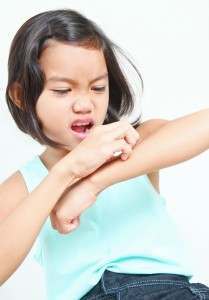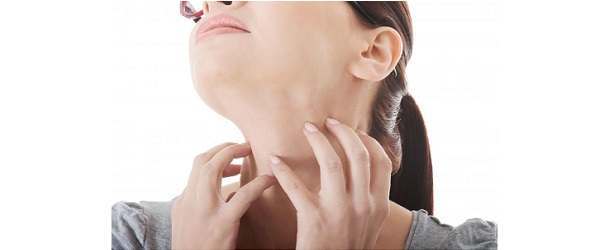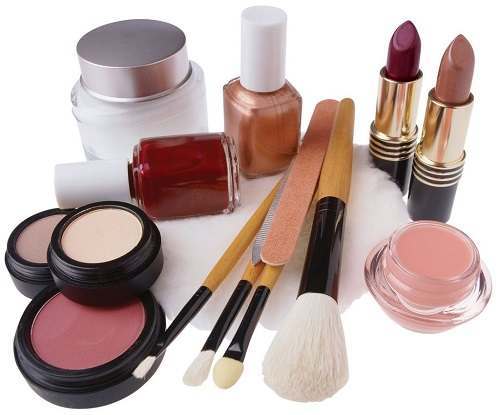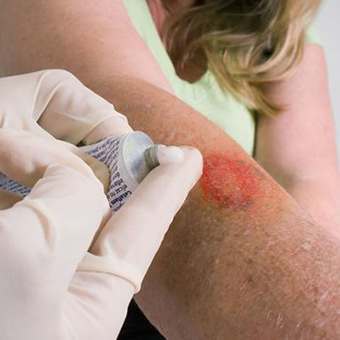The Signs and Symptoms of Ringworm
When you discover a mark or rash on your body, it could be caused by a number of things. Dryness and eczema are common causes, but sometimes it could be that you are infected with ringworm. If you have established that it is not caused by an injury, dry skin or an allergy, then one of the possible causes is a fungus. Research shows that up to 7% of children in elementary schools are infected with the fungus that causes ringworm, so it is more common than you think. In fact, it is highly contagious.
 Body ringworm (officially called tinea corporis) can appear on the body, but also the face. As the name indicates, it is characterized by a ring-like rash. The following indicators or symptoms could help you determine if your rash is caused by this particular fungus:
Body ringworm (officially called tinea corporis) can appear on the body, but also the face. As the name indicates, it is characterized by a ring-like rash. The following indicators or symptoms could help you determine if your rash is caused by this particular fungus:
- If you live in a warm climate or exercise regularly. Tinea corporis is more common in hot, humid areas as the fungus thrives in these conditions. Locker rooms or indoor swimming pools also provide the ideal climate for this fungus to flourish.
- The lesion is circular, red and has elevated edges. It forms rapidly into the signature round shape, but the center may be clear. The lesions can become scaly, crusty or form fluid-filled areas that ooze. You will get small, bald patches forming if it affects your scalp.
- The size can range from small up to 2 inches across and can occur alone or in groups of up to four lesions.
- The rash is very itchy. When clothes rub against the rash it can irritate it, while sweating or humid air can also make the itching and infection worse.
- The affected patches are on your trunk, legs, arms, neck and face.
- If you have been exposed to children and cats, which are both common hosts, you are at higher risk of being infected with ringworm. If you have been in contact with an infected person, pet or surface, the ringworm lesion is likely to appear 4 to 10 days after the exposure.
 Because the rings spread out as they progress they can merge together, which can confuse the diagnosis. When ringworm appears on the face and neck the signature rings may also not be apparent, and instead the skin may be itchy, swollen and dry. It can also be difficult to diagnose ringworm when it affects the hands too. When the skin becomes thicker on the palm and between the fingers, this could indicate a ringworm infection.
Because the rings spread out as they progress they can merge together, which can confuse the diagnosis. When ringworm appears on the face and neck the signature rings may also not be apparent, and instead the skin may be itchy, swollen and dry. It can also be difficult to diagnose ringworm when it affects the hands too. When the skin becomes thicker on the palm and between the fingers, this could indicate a ringworm infection.
If you have any of these risk factors or symptoms, and are concerned you may be infected with ringworm, it is recommended you consult a medical practitioner for a formal diagnosis. This could include a skin scraping. A positive result will indicate to your doctor that you need a specific anti-fungal treatment, as this condition will not clear on its own.

 Subscribe Now
Subscribe Now

 How To Spot Ringworm
How To Spot Ringworm What To Do To Prevent Infection
What To Do To Prevent Infection Vinegar
Vinegar
 Preventing ringworm may require that people stop sharing personal items such as clothes, pillows and towel as well as cosmetic items such as make-up, hairbrushes or combs. These things can all carry ringworm from an infected to person to an uninfected person and sharing these personal items should be avoided especially if a confirmed case of ringworm has been diagnosed.
Preventing ringworm may require that people stop sharing personal items such as clothes, pillows and towel as well as cosmetic items such as make-up, hairbrushes or combs. These things can all carry ringworm from an infected to person to an uninfected person and sharing these personal items should be avoided especially if a confirmed case of ringworm has been diagnosed. It is important to keep personal items clean as well. Washing clothes, bedding, and towels thoroughly and often is good for personal hygiene but it becomes imperative if someone in the home becomes infected with ringworm. Washing these items as well as hairbrushes, shoes and make-up brushes can help remove the fungus that causes ringworm from these items which should help prevent the transmission of the disease. Because fungus likes moisture, it is essential that things be dried properly after they are washed.
It is important to keep personal items clean as well. Washing clothes, bedding, and towels thoroughly and often is good for personal hygiene but it becomes imperative if someone in the home becomes infected with ringworm. Washing these items as well as hairbrushes, shoes and make-up brushes can help remove the fungus that causes ringworm from these items which should help prevent the transmission of the disease. Because fungus likes moisture, it is essential that things be dried properly after they are washed. If someone in the home has been infected with ringworm, try to avoid touching the skin around the are which has been infected with ringworm. Animals and pets may contract ringworm as well as pass it to humans so it is best to avoid petting them while they are infected as well. If contact must be made, it is best to both wash and dry the hands thoroughly as well as any part of the body that may have come into contact with an infected person or pet. If young children have contracted ringworm, keeping them home from school or nurseries and out of contact with other children can prevent the fungus from running rampant through a school or day care center.
If someone in the home has been infected with ringworm, try to avoid touching the skin around the are which has been infected with ringworm. Animals and pets may contract ringworm as well as pass it to humans so it is best to avoid petting them while they are infected as well. If contact must be made, it is best to both wash and dry the hands thoroughly as well as any part of the body that may have come into contact with an infected person or pet. If young children have contracted ringworm, keeping them home from school or nurseries and out of contact with other children can prevent the fungus from running rampant through a school or day care center.
 The way these infections manifest themselves depends on what part of the body they are found on and where they were picked up. Fungal infections can be passed through soil, pets and other people. People who have minor injuries to their skin like breakages or scratches are more likely to suffer from skin infections. Skin infections can be uncomfortable especially for children. However, they can be easily treated either with an anti-fungal medication or by treatment from a doctor.
The way these infections manifest themselves depends on what part of the body they are found on and where they were picked up. Fungal infections can be passed through soil, pets and other people. People who have minor injuries to their skin like breakages or scratches are more likely to suffer from skin infections. Skin infections can be uncomfortable especially for children. However, they can be easily treated either with an anti-fungal medication or by treatment from a doctor.

 If your immune system is compromised, or you are rundown, you are more susceptible to getting a ringworm infection. This is where a healthy, balanced diet can really make a difference. By adding more ingredients like carrots, spinach, hot peppers and kale to your diet you will help your body produce
If your immune system is compromised, or you are rundown, you are more susceptible to getting a ringworm infection. This is where a healthy, balanced diet can really make a difference. By adding more ingredients like carrots, spinach, hot peppers and kale to your diet you will help your body produce  Natural medicine practitioners also believe that fungal infections (including ringworm) thrive on certain foods. These are foods that are high in sugar (baked goods, sweets, and even fruit), pasta and white rice (refined carbohydrates), breads and dried fruits. They propose that you remove these items from your diet, and limit your fruits to two a day. Consider doing this for a period of three months to see if this has a difference to the frequency of your ringworm infections.
Natural medicine practitioners also believe that fungal infections (including ringworm) thrive on certain foods. These are foods that are high in sugar (baked goods, sweets, and even fruit), pasta and white rice (refined carbohydrates), breads and dried fruits. They propose that you remove these items from your diet, and limit your fruits to two a day. Consider doing this for a period of three months to see if this has a difference to the frequency of your ringworm infections.